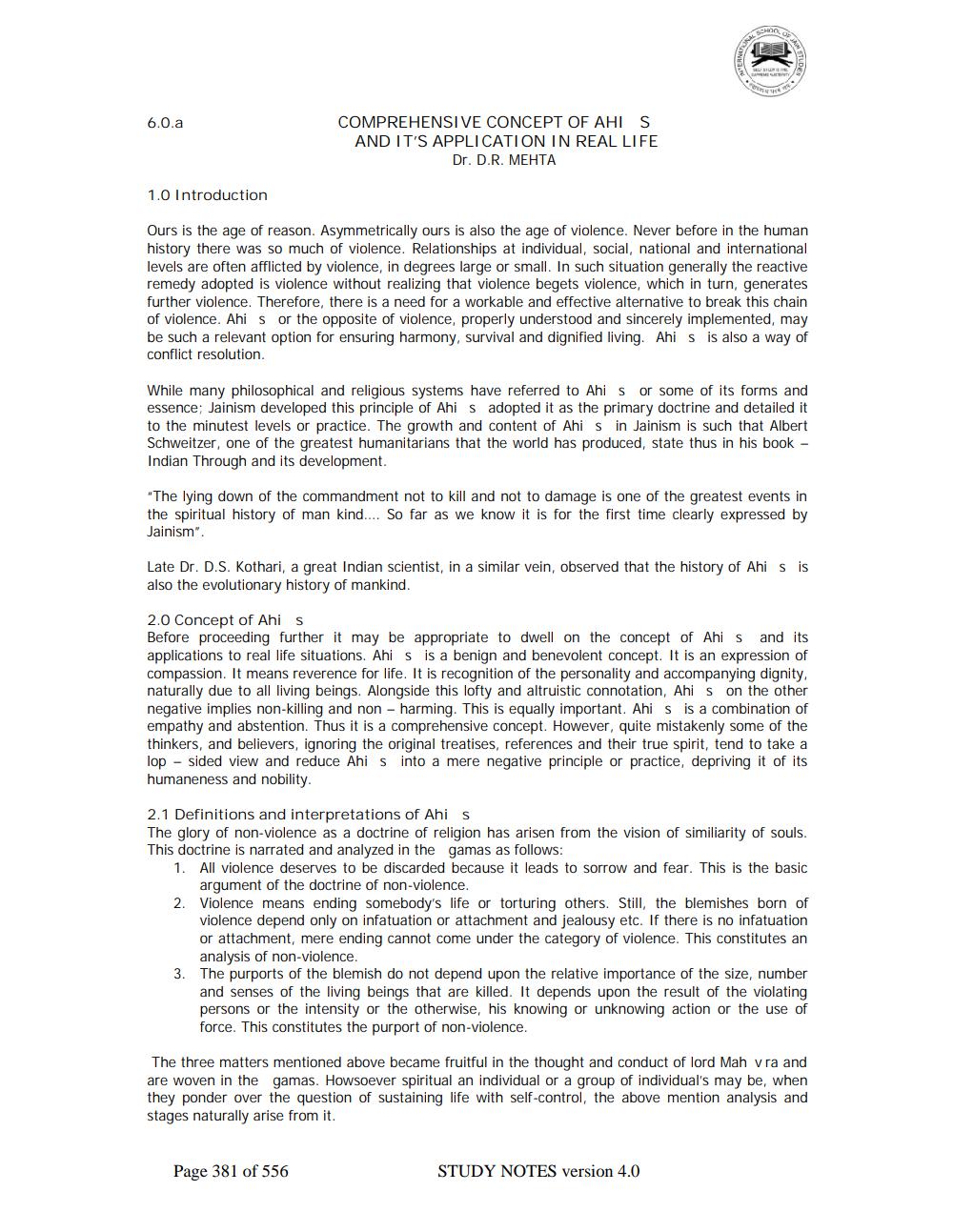________________
6.0.a
COMPREHENSIVE CONCEPT OF AHI S AND IT'S APPLICATION IN REAL LIFE Dr. D.R. MEHTA
1.0 Introduction
Ours is the age of reason. Asymmetrically ours is also the age of violence. Never before in the human history there was so much of violence. Relationships at individual, social, national and international levels are often afflicted by violence, in degrees large or small. In such situation generally the reactive remedy adopted is violence without realizing that violence begets violence, which in turn, generates further violence. Therefore, there is a need for a workable and effective alternative to break this chain of violence. Ahi s or the opposite of violence, properly understood and sincerely implemented, may be such a relevant option for ensuring harmony, survival and dignified living. Ahis is also a way of conflict resolution.
While many philosophical and religious systems have referred to Ahi s or some of its forms and essence; Jainism developed this principle of Ahi s adopted it as the primary doctrine and detailed it to the minutest levels or practice. The growth and content of Ahi s in Jainism is such that Albert Schweitzer, one of the greatest humanitarians that the world has produced, state thus in his book - Indian Through and its development.
"The lying down of the commandment not to kill and not to damage is one of the greatest events in the spiritual history of man kind.... So far as we know it is for the first time clearly expressed by Jainism".
Late Dr. D.S. Kothari, a great Indian scientist, in a similar vein, observed that the history of Ahis is also the evolutionary history of mankind.
2.0 Concept of Ahi s
Before proceeding further it may be appropriate to dwell on the concept of Ahi s and its applications to real life situations. Ahis is a benign and benevolent concept. It is an expression of compassion. It means reverence for life. It is recognition of the personality and accompanying dignity, naturally due to all living beings. Alongside this lofty and altruistic connotation, Ahi s on the other negative implies non-killing and non-harming. This is equally important. Ahi s is a combination of empathy and abstention. Thus it is a comprehensive concept. However, quite mistakenly some of the thinkers, and believers, ignoring the original treatises, references and their true spirit, tend to take a lopsided view and reduce Ahi s into a mere negative principle or practice, depriving it of its humaneness and nobility.
2.1 Definitions and interpretations of Ahi s
The glory of non-violence as a doctrine of religion has arisen from the vision of similiarity of souls. This doctrine is narrated and analyzed in the gamas as follows:
1. All violence deserves to be discarded because it leads to sorrow and fear. This is the basic argument of the doctrine of non-violence.
2. Violence means ending somebody's life or torturing others. Still, the blemishes born of violence depend only on infatuation or attachment and jealousy etc. If there is no infatuation or attachment, mere ending cannot come under the category of violence. This constitutes an analysis of non-violence.
3. The purports of the blemish do not depend upon the relative importance of the size, number and senses of the living beings that are killed. It depends upon the result of the violating persons or the intensity or the otherwise, his knowing or unknowing action or the use of force. This constitutes the purport of non-violence.
The three matters mentioned above became fruitful in the thought and conduct of lord Mah vra and are woven in the gamas. Howsoever spiritual an individual or a group of individual's may be, when they ponder over the question of sustaining life with self-control, the above mention analysis and stages naturally arise from it.
Page 381 of 556
STUDY NOTES version 4.0




